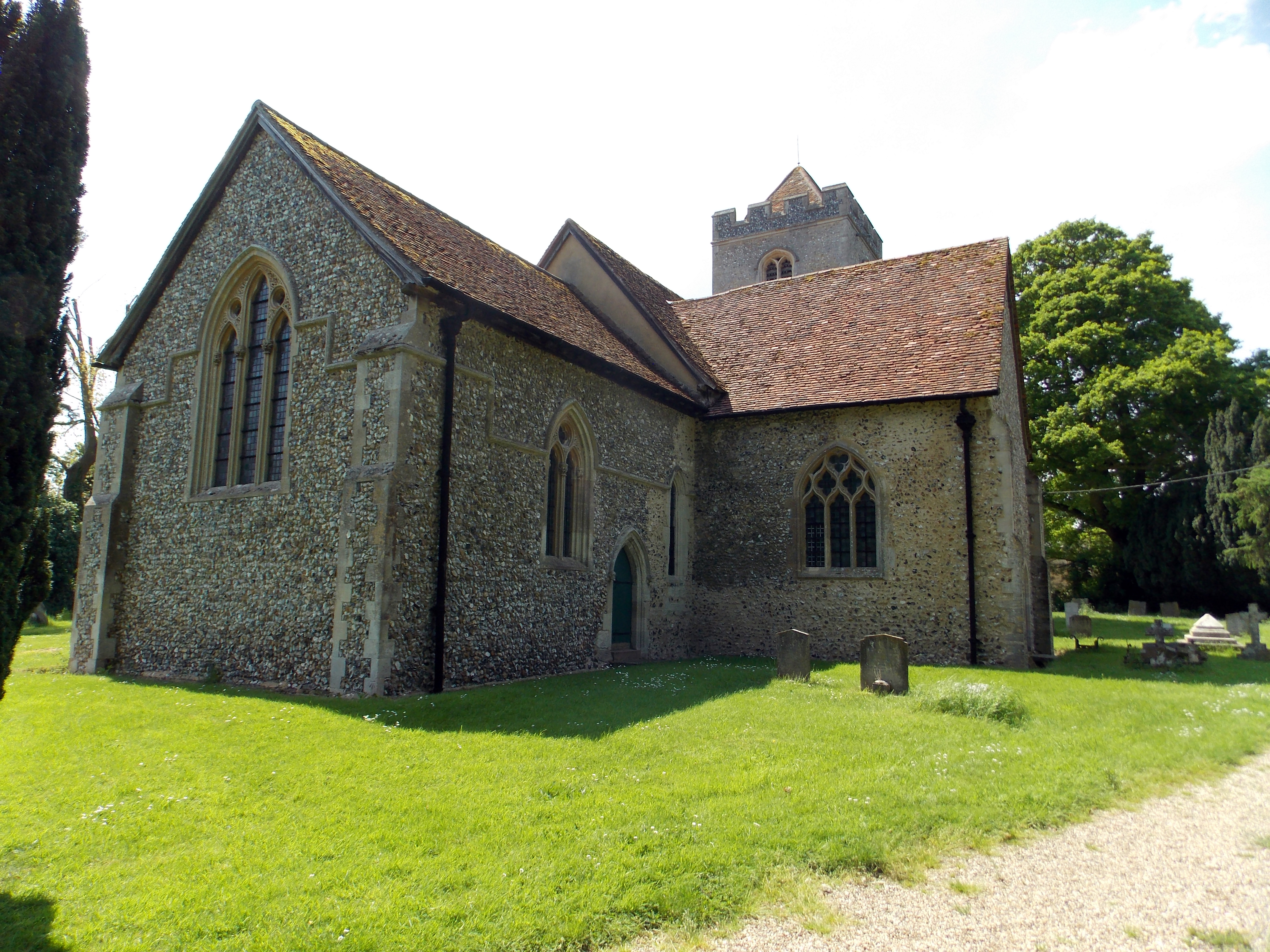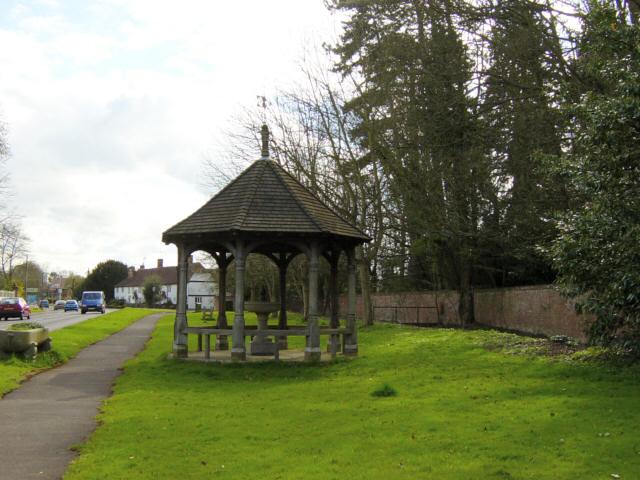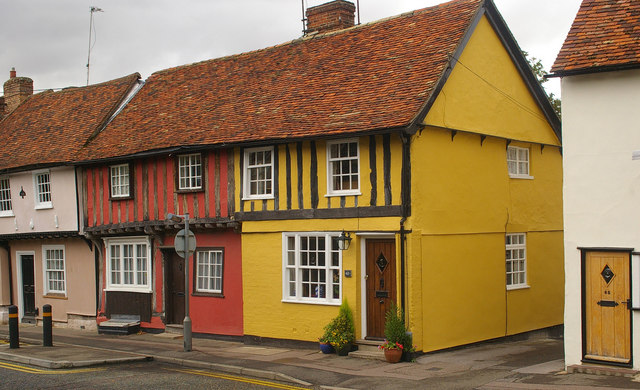|
St Nicholas' Church, Berden
St Nicholas' Church is a Grade I listed parish church in the village of Berden, Essex, England. Of the Early English Gothic style, the church has a Norman nave with 13th-century transepts and a tower dated to the 15th century. It underwent major restoration in 1868. The church held a 20th-century 38-year revival of a "Boy Bishop" miracle play. It contains memorials to significant families of the local Berden Hall and Berden Priory, and to a murdered Berden parish constable. St Nicholas' is part of a joint benefice—sharing a common priest— in the Deanery of Saffron Walden of the Diocese of Chelmsford. Other churches in the group are St Mary the Virgin at Manuden; St Simon and St Jude at Quendon; and All Saints at Rickling."St. Mary the Virgin Manuden" Manuden Parish Council. Retrieved May 2014 Hist ...
|
Berden
Berden is a village and civil parish in Essex, England. Berden village is approximately north from Bishop's Stortford, Hertfordshire and north-west from the county town of Chelmsford. Berden parish, with its own parish council, is in the district of Uttlesford and in the parliamentary constituency of Saffron Walden. According to the 2001 census Berden had a population of 427, increasing to 465 at the census 2011. Berden was part of Clavering hundred and is mentioned in the Domesday Book of 1086 as a location with four villagers and five smallholders. , Open Domesday St Nicholas' Church Theparish church
A parish church (or par ...
[...More Info...] [...Related Items...] OR: [Wikipedia] [Google] [Baidu] |
Victorian Restoration
The Victorian restoration was the widespread and extensive refurbishment and rebuilding of Church of England churches and cathedrals that took place in England and Wales during the 19th-century reign of Queen Victoria. It was not the same process as is understood today by the term building restoration. Against a background of poorly maintained church buildings, a reaction against the Puritan ethic manifested in the Gothic Revival, and a shortage of churches where they were needed in cities, the Cambridge Camden Society and the Oxford Movement advocated a return to a more medieval attitude to churchgoing. The change was embraced by the Church of England which saw it as a means of reversing the decline in church attendance. The principle was to "restore" a church to how it might have looked during the " Decorated" style of architecture which existed between 1260 and 1360, and many famous architects such as George Gilbert Scott and Ewan Christian enthusiastically accepted commis ... [...More Info...] [...Related Items...] OR: [Wikipedia] [Google] [Baidu] |
Chancel
In church architecture, the chancel is the space around the altar, including the choir and the sanctuary (sometimes called the presbytery), at the liturgical east end of a traditional Christian church building. It may terminate in an apse. Overview The chancel is generally the area used by the clergy and choir during worship, while the congregation is in the nave. Direct access may be provided by a priest's door, usually on the south side of the church. This is one definition, sometimes called the "strict" one; in practice in churches where the eastern end contains other elements such as an ambulatory and side chapels, these are also often counted as part of the chancel, especially when discussing architecture. In smaller churches, where the altar is backed by the outside east wall and there is no distinct choir, the chancel and sanctuary may be the same area. In churches with a retroquire area behind the altar, this may only be included in the broader definition of chancel. I ... [...More Info...] [...Related Items...] OR: [Wikipedia] [Google] [Baidu] |
Kelly's Directory
Kelly's Directory (or more formally, the Kelly's, Post Office and Harrod & Co Directory) was a trade directory in England that listed all businesses and tradespeople in a particular city or town, as well as a general directory of postal addresses of local gentry, landowners, charities, and other facilities. In effect, it was a Victorian version of today's Yellow Pages. Many reference libraries still keep their copies of these directories, which are now an important source for historical research. Origins The eponymous originator of the directory was Frederic Festus Kelly. In 1835 or 1836 he became chief inspector of letter-carriers for the inland or general post office, and took over publication of the Post Office London Directory, whose copyright was in private hands despite its semi-official association with the post office, and which Kelly had to purchase from the widow of his predecessor. He founded Kelly & Co. and he and various family members gradually expanded the company ... [...More Info...] [...Related Items...] OR: [Wikipedia] [Google] [Baidu] |
Parish Register
A parish register in an ecclesiastical parish is a handwritten volume, normally kept in the parish church in which certain details of religious ceremonies marking major events such as baptisms (together with the dates and names of the parents), marriages (with the names of the partners), children, and burials (that had taken place within the parish) are recorded. Along with these vital details, church goods, the parish's response to briefs, and notes on various happenings in the parish were also recorded. These elaborate records existed for the purpose of preventing bigamy and consanguineous marriage. The information recorded in registers was also considered significant for secular governments’ own recordkeeping, resulting in the churches supplying the state with copies of all parish registers. A good register permits the family structure of the community to be reconstituted as far back as the sixteenth century. Thus, these records were distilled for the definitive study of the h ... [...More Info...] [...Related Items...] OR: [Wikipedia] [Google] [Baidu] |
Domesday Book
Domesday Book () – the Middle English spelling of "Doomsday Book" – is a manuscript record of the "Great Survey" of much of England and parts of Wales completed in 1086 by order of King William I, known as William the Conqueror. The manuscript was originally known by the Latin name ''Liber de Wintonia'', meaning "Book of Winchester", where it was originally kept in the royal treasury. The '' Anglo-Saxon Chronicle'' states that in 1085 the king sent his agents to survey every shire in England, to list his holdings and dues owed to him. Written in Medieval Latin, it was highly abbreviated and included some vernacular native terms without Latin equivalents. The survey's main purpose was to record the annual value of every piece of landed property to its lord, and the resources in land, manpower, and livestock from which the value derived. The name "Domesday Book" came into use in the 12th century. Richard FitzNeal wrote in the ''Dialogus de Scaccario'' ( 1179) that the book ... [...More Info...] [...Related Items...] OR: [Wikipedia] [Google] [Baidu] |
Rickling, Essex
Rickling is a village and former civil parish, now in the parish of Quendon and Rickling, in the Uttlesford district of Essex, England. The village is situated approximately north from the town of Bishop's Stortford. Saffron Walden, at , and the larger village of Newport, Essex, Newport, at , lie to the north-east. In 1931 the parish had a population of 378. Rickling is north-west from the village of Quendon. Rickling is the site of the parish church, All Saints, and a few houses. Rickling Green, from Rickling, is conjoined to Quendon. History The name Rickling is found in the ''Domesday Book'' as ''Richelinga''. It is recorded as having quite a large population of 34 households, and it paid substantial taxes of eight geld units. ''Richelinga'' or Rickling derives from an Old English personal name ''Ricula'' and ''inga'', thus ‘followers of the people of Ricula’. The wife of Sledd of Essex, Sledda King of the East Saxons (c.587-604) and sister of Æthelberht of Kent was ... [...More Info...] [...Related Items...] OR: [Wikipedia] [Google] [Baidu] |
Quendon
Quendon is a linear village and former civil parish, now in the parish of Quendon and Rickling, in the Uttlesford district, in the county of Essex, England. Quendon is located on the B1383 (formerly the A11 trunk road) between Saffron Walden and Bishop's Stortford, around from Rickling Green, the main village centre of Rickling. The trunk road status was lost due to the opening of the parallel M11 motorway. In 1931 the parish had a population of 156. History The name of Quendon derives from the Old English ''cwena'' (queen, or woman) and ''denu'' (a valley), meaning the valley owned by a queen, or a woman; the queen referred to may be Ricula, wife of King Sledd of Essex, who gave her name to Rickling, the adjacent parish. The history of Quendon is closely associated with its close neighbour, Rickling village. Quendon is mentioned in the Domesday Book, with 10 households populated by 3 villagers, 4 smallholders and 3 slaves. Historically these two villages were separated b ... [...More Info...] [...Related Items...] OR: [Wikipedia] [Google] [Baidu] |
Manuden
Manuden is a village and civil parish in the Uttlesford district of Essex, England. It is located around north of Bishop's Stortford, in the neighbouring county of Hertfordshire, and around south-west of Saffron Walden. The village has its own parish council. Manuden is mentioned in the Domesday Book of 1086 as one of the settlements within Clavering hundred. Part of Manuden is designated as a conservation area, with several listed buildings in and around the village. The local church is St Mary the Virgin. A tablet within the church commemorates the Jacobean statesman and diplomat William Wade, who spent his retirement at Battles Hall in the village, and is buried in the church. There is a primary school in the village. In 2010, Manuden County Primary School topped the league table for English schools at KS2 with all pupils attaining level 5 in both English and maths. There are several active village organisations, including a local history society, junior football club a ... [...More Info...] [...Related Items...] OR: [Wikipedia] [Google] [Baidu] |
Saffron Walden
Saffron Walden is a market town in the Uttlesford district of Essex, England, north of Bishop's Stortford, south of Cambridge and north of London. It retains a rural appearance and some buildings of the medieval period. The population was 15,504 at the 2011 census. History Archaeological evidence suggests continuous settlement on or near the site of Saffron Walden from at least the Neolithic British Isles, Neolithic period. It is believed that a small Romano-British culture, Romano-British settlement and fort – possibly in the area round Abbey Lane – existed as an outpost of the much larger settlement of Great Chesterford, Cestreforda to the north. After the Norman conquest of England, Norman invasion of 1066, a stone church was built. Walden Castle, dating from about 1140, may have been built on pre-existing fortifications. A priory, Walden Abbey, was founded under the patronage of Geoffrey de Mandeville, 1st Earl of Essex about 1136, on the site of what is now Audley En ... [...More Info...] [...Related Items...] OR: [Wikipedia] [Google] [Baidu] |
Benefice
A benefice () or living is a reward received in exchange for services rendered and as a retainer for future services. The Roman Empire used the Latin term as a benefit to an individual from the Empire for services rendered. Its use was adopted by the Western Church in the Carolingian, Carolingian Era as a benefit bestowed by the crown or church officials. A benefice specifically from a church is called a precaria (pl. ''precariae)'', such as a stipend, and one from a monarch or nobleman is usually called a fief. A benefice is distinct from an allodial title, allod, in that an allod is property owned outright, not bestowed by a higher authority. Roman Catholic Church Roman imperial origins In ancient Rome a ''benefice'' was a gift of land (precaria) for life as a reward for services rendered, originally, to the state. The word comes from the Latin language, Latin noun ''beneficium'', meaning "benefit". Carolingian Era In the 8th century, using their position as Mayor of the Pa ... [...More Info...] [...Related Items...] OR: [Wikipedia] [Google] [Baidu] |
Parish Constable
A parish constable, also known as a petty constable, was a law enforcement officer, usually unpaid and part-time, serving a parish. The position evolved from the ancient '' chief pledge'' of a ''tithing'', and takes its name from the office of ''constable'', with which it was originally unconnected. It is distinct from the more senior position of the hundred-constable, also known as the ''High Constable'' (e.g. ''the High Constable of Holborn'', who was one of the hundred-constables for Ossulstone; Ossulstone's hundred court was located at Red Lion Square, in Holborn). In London (excluding the City of London), the position was superseded by the introduction of the Metropolitan Police Service in 1829, which created a full-time professional force. Elsewhere, professional county police forces took over, after the County Police Act 1839 was passed. History of the position Origin The office of parish constable originated from the ''tithing'', a small unit of local administration. E ... [...More Info...] [...Related Items...] OR: [Wikipedia] [Google] [Baidu] |







